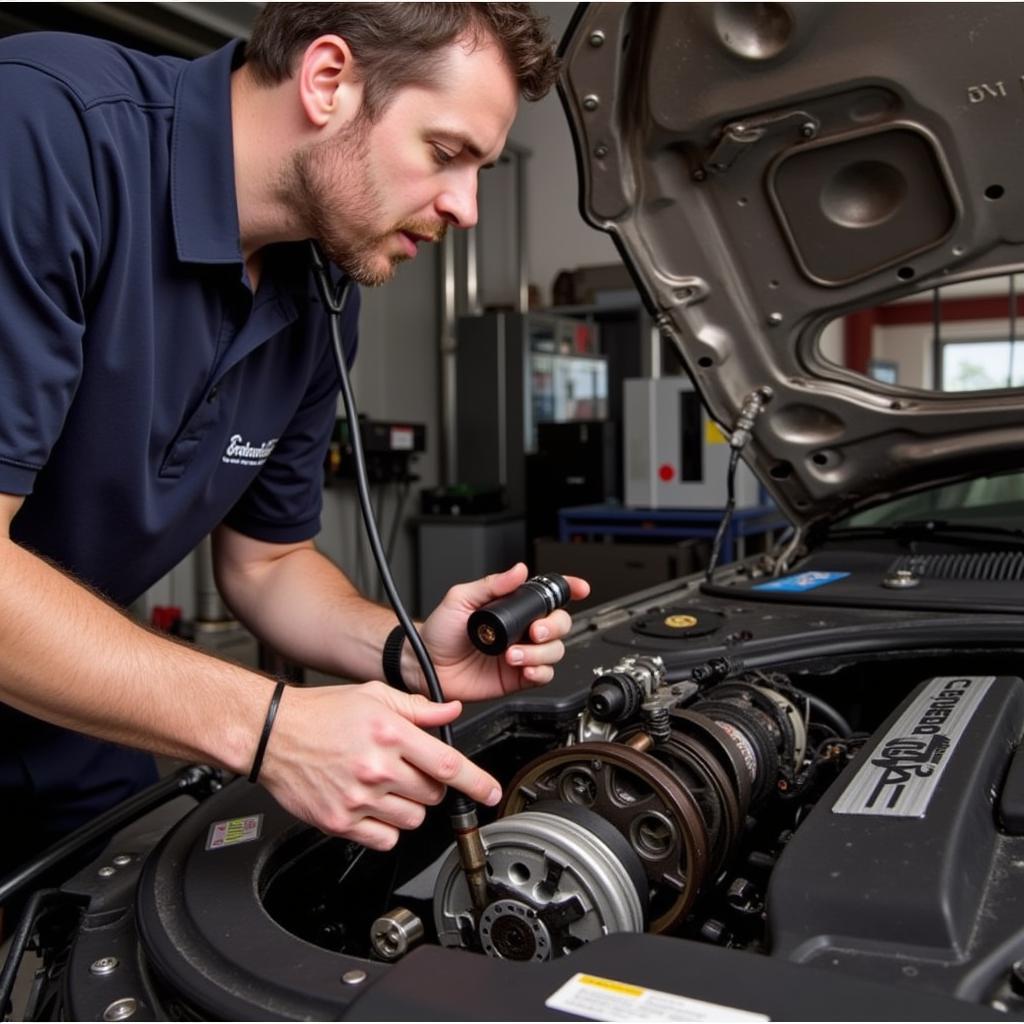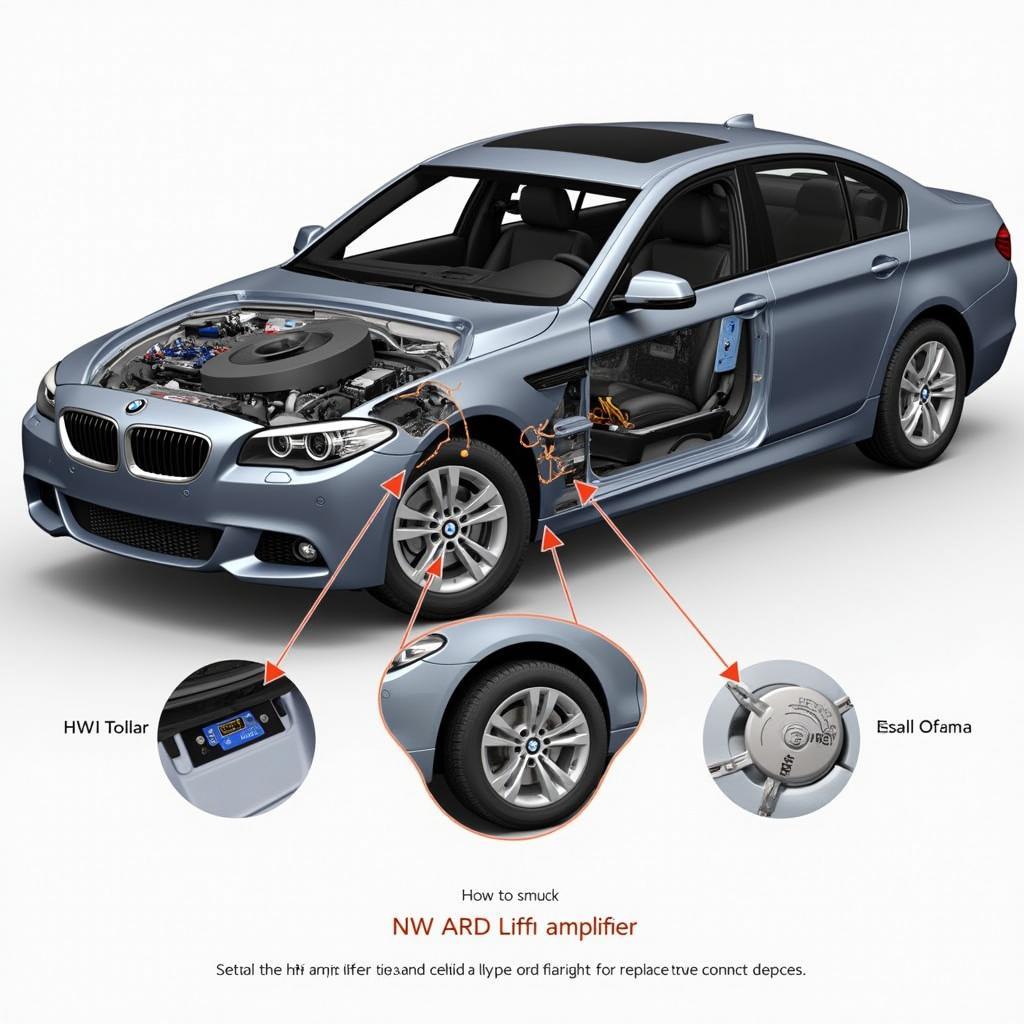That annoying chirping sound coming from your 1996 BMW at low RPM can be frustrating and concerning. This article will delve into the common causes of this noise, how to diagnose the problem, and potential solutions. We’ll explore everything from belts and pulleys to more complex issues, empowering you to tackle this issue head-on.
Common Causes of a Chirping Sound at Low RPM in a 1996 BMW
Several components can contribute to a chirping sound at low RPM in your 1996 BMW. Understanding these possibilities can help you narrow down the source of the noise.
Belts and Pulleys
One of the most frequent culprits is a worn or loose serpentine belt. As the belt ages, it loses its grip, causing it to slip and create a chirping sound, particularly noticeable at low engine speeds. Similarly, worn pulleys can also create this noise. A damaged pulley bearing can produce a high-pitched chirp or squeal.
Water Pump
A failing water pump can also produce a chirping or whining noise. This is often due to worn bearings within the pump. If the chirping intensifies when the engine is cold and fades as it warms up, the water pump is a likely suspect.
Power Steering Pump
Another potential source is the power steering pump. A low power steering fluid level or a failing pump can generate a chirping or whining sound, especially during low-speed turns.
Alternator
Although less common, a failing alternator can sometimes produce a chirping noise. This is usually related to bearing wear within the alternator.
Diagnosing the Chirping Sound
Pinpointing the exact source of the chirp requires a systematic approach. Start by visually inspecting the belts and pulleys for signs of wear, cracks, or looseness. Next, check the fluid levels for the power steering and cooling system. If the noise persists, consider using a mechanic’s stethoscope to isolate the source. By placing the stethoscope on various components, you can pinpoint the origin of the chirping sound.
Using a Mechanic’s Stethoscope
A mechanic’s stethoscope is an invaluable tool for diagnosing car noises. It amplifies the sounds from specific engine components, allowing you to isolate the source of the chirp.
 Mechanic Using Stethoscope to Diagnose Chirping Noise on 1996 BMW
Mechanic Using Stethoscope to Diagnose Chirping Noise on 1996 BMW
Solutions and Repairs
Once you’ve identified the source of the chirping, the next step is to address the issue. Replacing a worn serpentine belt or a faulty pulley is usually a straightforward process. However, if the problem lies with the water pump, power steering pump, or alternator, these components may require replacement.
DIY vs. Professional Repair
While some repairs, like replacing a belt, can be tackled by DIY enthusiasts, others require specialized tools and expertise. If you’re unsure about tackling the repair yourself, it’s always best to consult a qualified mechanic.
“Regular maintenance is key to preventing these issues,” advises John Miller, a seasoned BMW specialist with over 20 years of experience. “Inspecting your belts and pulleys regularly and addressing any signs of wear promptly can save you time and money in the long run.”
Conclusion
A chirping sound at low RPM in your 1996 BMW can stem from various sources, from a simple worn belt to a more complex issue like a failing water pump. By following the diagnostic steps outlined in this article and addressing the underlying problem promptly, you can eliminate that annoying chirp and ensure your BMW runs smoothly. Remember, a little preventative maintenance goes a long way!
FAQ
- What is the most common cause of a chirping sound in a BMW? A worn serpentine belt is often the culprit.
- Can I drive my BMW with a chirping sound? While you might be able to drive for a short period, it’s best to address the issue promptly to prevent further damage.
- How much does it cost to fix a chirping sound? The cost varies depending on the source of the noise and the required repairs.
- How can I prevent chirping sounds in my BMW? Regular maintenance, including belt and pulley inspections, is key to prevention.
- What tools do I need to diagnose a chirping sound? A mechanic’s stethoscope can be helpful in pinpointing the source.
- Is it safe to use belt dressing to stop the chirping? While belt dressing might temporarily silence the noise, it doesn’t address the underlying issue and is not a recommended long-term solution.
- Should I replace all my belts at once? It’s generally a good idea to replace all belts simultaneously to ensure consistent performance and prevent future issues.
“Ignoring a chirping sound can lead to more serious problems down the road,” warns Maria Sanchez, a certified automotive technician. “Addressing the issue early can prevent costly repairs and ensure your vehicle’s longevity.”
Need more help? Explore our other articles on BMW maintenance and troubleshooting. Check out our guides on diagnosing engine noises and preventative maintenance tips.
Contact us via Whatsapp: +1 (641) 206-8880, Email: [email protected] or visit us at 276 Reock St, City of Orange, NJ 07050, United States. Our customer service team is available 24/7 to assist you.


